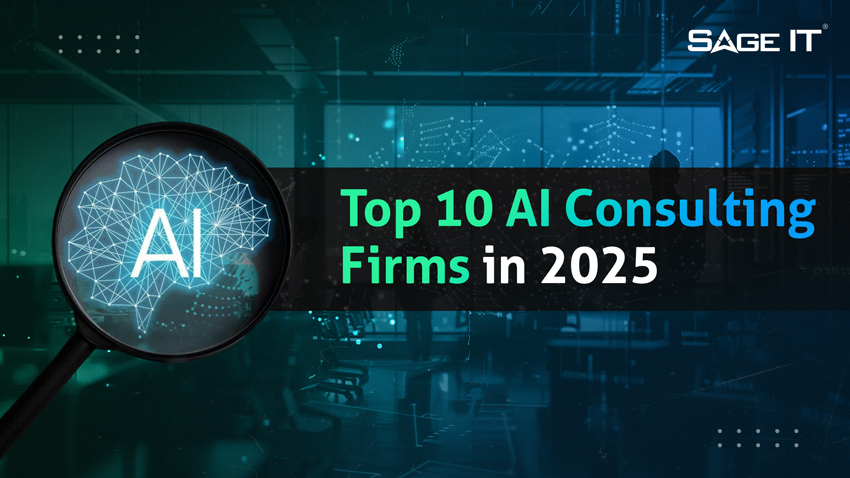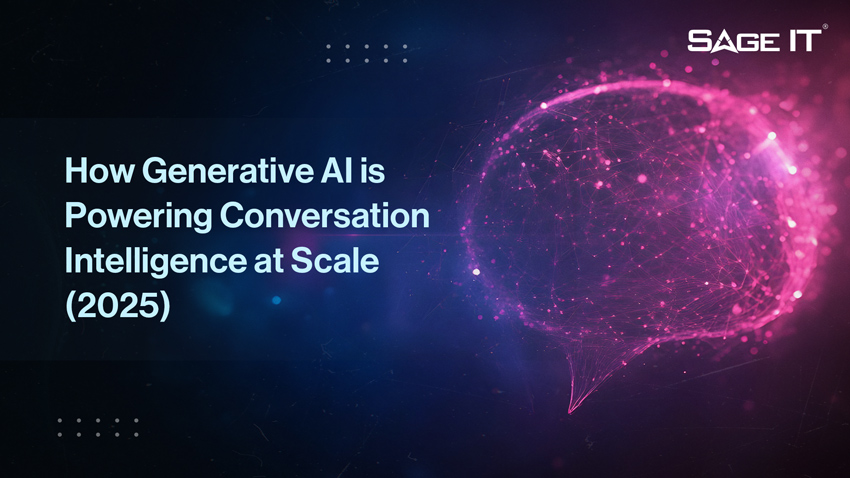In today’s world, technology is advancing at an unprecedented pace. One of the most significant developments in recent years has been the rise of Machine Learning (ML). ML has transformed industries and enabled businesses to improve their performance and efficiency. In this comprehensive guide, we will dive deep into what Machine Learning is, its various applications across different sectors, and the challenges faced in implementing it. We will also explore the different types of ML, such as supervised, unsupervised, semi-supervised, and reinforcement learning. Additionally, we will cover how to build a machine learning model and choose the right one. We will also discuss the human aspect of ML and the career prospects available in this expanding field. Lastly, we will showcase real-life applications of ML such as voice assistance technology and fraud detection. Join us as we unravel the mystery behind Machine Learning and discover how it’s shaping our future.
Significance of Machine Learning in Today’s World
Revolutionizing various industries, from healthcare to finance, machine learning enables systems to autonomously learn and improve, analyzing large data sets for insights. This technology has the potential to enhance decision-making processes in businesses and reshape the landscape of artificial intelligence. With the integration of different algorithms, machine learning is paving the way for unprecedented advancements in AI, impacting fields like social media and data collection. The ability to process vast amounts of data and recognize patterns makes machine learning essential in handling sensor data and personal information, contributing to the development of facial recognition and recommendation engines.
The Impact of Machine Learning on Industry
Machine learning drives predictive maintenance in manufacturing, reducing downtime and costs, while also transforming customer service through virtual assistants and chatbots. Industries leverage machine learning for accurate fraud detection and prevention, revolutionizing autonomous vehicles for enhanced safety and efficiency. Additionally, it plays a pivotal role in financial services by automating algorithmic trading, showcasing its wide impact across various sectors.
Why Businesses are Adopting Machine Learning
In today’s competitive landscape, businesses are increasingly turning to machine learning to gain an edge through data-driven insights. By leveraging machine learning, businesses can enhance customer targeting and personalization, as well as automate and optimize operational processes. Many organizations partner with specialized AI development services to build and scale these solutions effectively. This approach enables businesses to extract valuable insights from big data, leading to substantial cost savings and improved efficiency. With the potential for machine learning to revolutionize decision-making processes, it is no surprise that businesses across various industries are embracing this transformative field.
Diving Deeper into Different Types of Machine Learning
Supervised, unsupervised, and reinforcement learning are the three primary types of machine learning, with each addressing different business problems and scenarios. Understanding these types is crucial for selecting the right approach, as they cater to diverse data acquisition and processing needs. Exploring them opens doors to varied applications, highlighting the importance of choosing the right type of machine learning for specific use cases. Leveraging neural networks, support vectors, and decision trees among different algorithms is essential across these learning types to achieve accurate results. Additionally, exploring how each type handles new data, including unseen and sensor data, helps in understanding their real-world applications.
Unraveling Supervised Machine Learning
Unraveling the intricacies of supervised machine learning involves training a model on labeled training data, often used for classification problems like spam detection and image recognition. Predictions are made based on historical data, emphasizing the importance of accurately labeled data. Human intervention is critical in providing accurate training data for supervised learning algorithms. The process relies on labeled data to make predictions and decisions, making it essential for tasks like sentiment analysis and language translation.
Unveiling the Mystery of Unsupervised Machine Learning
Unsupervised machine learning involves working with unlabeled data to discover hidden patterns and structures. Common algorithms in unsupervised learning include clustering and association methods. This type of machine learning is valuable for customer segmentation, anomaly detection, and recommendation systems. Unsupervised learning algorithms are powerful tools for data mining and pattern recognition, capable of efficiently handling large amounts of data. By utilizing unsupervised machine learning, businesses can gain valuable insights from their data without the need for labeled information, opening up new opportunities for analysis and understanding.
Exploring the Concept of Semi-supervised Learning
Exploring the concept of semi-supervised learning involves leveraging both labeled and unlabeled data for training, which proves beneficial when labeled data is scarce, but unlabeled data is abundant. This approach enhances the capabilities of traditional machine learning methods by combining supervised and unsupervised learning techniques. It is particularly useful in scenarios where manual labeling of data is time-consuming and costly, making it a cost-effective option. The semi-supervised learning model can handle large amounts of data efficiently and is widely used across different domains due to its versatility.
Understanding Reinforcement Learning and Its Scope
Reinforcement learning trains an agent to make sequential decisions, aiming to maximize cumulative rewards over time. Its scope extends to training autonomous systems, such as robotics and gaming, and optimizing business processes. Moreover, it plays a key role in training machine learning models for decision-making tasks. Reinforcement learning’s pivotal role in optimizing resource management and its application in diverse fields make it a significant component in the NLP algorithms’ landscape. The utilization of reinforcement learning in social media recommendation engines and its potential applications in processing sensor data highlight its relevance in today’s data-driven world.
The Intricacies of Building a Machine Learning Model
Building a machine learning model involves several intricate steps. It begins with data preprocessing, where the raw data is cleaned, transformed, and made ready for training. The next step is model selection, which depends on the nature of the input data and the specific problem being addressed. Once a model is chosen, it undergoes training using algorithms and techniques to learn from the data. Evaluating the model’s performance is crucial, typically measured through metrics like accuracy, precision, and recall. Additionally, feature engineering and dimensionality reduction play a vital role in optimizing the model’s effectiveness. This entire process is iterative, involving continuous experimentation and refinement to achieve the desired outcomes.
Steps to Choose the Right Machine Learning Model
Choosing the appropriate machine learning model begins with understanding the problem at hand. It entails the selection of suitable algorithms based on the nature of the data and the domain of the issue. Essential steps include evaluating model performance through cross-validation and fine-tuning hyperparameters. Understanding the trade-offs between various machine learning models is crucial, as the right choice balances performance and interpretability. This process involves careful consideration of the model’s ability to handle new data and the impact of different algorithms on performance.
Training and Optimizing a Machine Learning Model
Training a machine learning model involves exposing it to data in order for it to identify and understand patterns. Subsequently, the optimization process aims to enhance the model’s performance through various techniques. The data used to train the model plays a pivotal role in its optimization, highlighting the significance of quality data collection and preprocessing. Furthermore, feature engineering significantly influences both the training and optimization of the model, impacting its overall efficacy. Additionally, cross-validation is indispensable for assessing the model’s ability to generalize and perform well on unseen data, a crucial aspect in ensuring its real-world applicability and reliability.
Applications of Machine Learning Across Various Sectors
Revolutionizing healthcare, predictive analytics has been a significant application of machine learning. Finance benefits from fraud detection and risk assessment enabled by machine learning algorithms. Route optimization in transportation and logistics is another area where machine learning plays a crucial role. In the retail industry, demand forecasting and personalization are being transformed by leveraging machine learning. Additionally, the energy sector utilizes machine learning for predictive maintenance of equipment, enhancing operational efficiency and reducing downtime. Across these sectors, machine learning is driving innovation and efficiency through predictive capabilities, risk assessment, and optimization algorithms.
Machine Learning Transforming the Healthcare Sector
Machine learning plays a pivotal role in revolutionizing the healthcare sector. It enables the prediction of disease outbreaks and facilitates early diagnosis, enhancing proactive interventions. Moreover, machine learning contributes to personalized treatment plans and supports drug discovery, leading to more effective and tailored healthcare solutions. Healthcare organizations utilize machine learning for in-depth medical image analysis, fostering accurate diagnostics and treatment evaluations. Furthermore, predictive analytics powered by machine learning empowers healthcare providers to improve patient outcomes through proactive and preventive measures. The integration of machine learning algorithms also advances precision medicine initiatives, ensuring tailored medical approaches for individual patients.
Impact of Machine Learning on the Finance Industry
The finance industry benefits significantly from machine learning. Firstly, machine learning algorithms play a crucial role in enhancing fraud detection in financial transactions, providing an added layer of security against fraudulent activities. Additionally, lending institutions utilize machine learning for credit scoring and risk assessment, enabling more accurate evaluation of potential borrowers. Furthermore, algorithmic trading systems employ machine learning for predictive analysis, aiding in making informed investment decisions. Moreover, personalized financial recommendations powered by machine learning contribute to improving customer satisfaction. Lastly, machine learning drives the development of innovative financial products, leading to enhanced financial services for consumers.
Machine Learning Revolutionizing Transportation and Logistics
Revolutionizing transportation and logistics, machine learning algorithms play a pivotal role in optimizing delivery routes and reducing transit times. These algorithms also enable predictive maintenance, minimizing downtime for vehicles through proactive identification of maintenance needs. Real-time tracking of shipments and efficient inventory management are made possible, enhancing operational efficiency. Additionally, the integration of machine learning in autonomous vehicles empowers them with advanced decision-making capabilities, leading to safer and more reliable transportation methods. Furthermore, machine learning algorithms enhance predictive demand forecasting in logistics, allowing businesses to proactively address market demands and efficiently manage inventory, thereby revolutionizing the traditional logistics landscape.
Pros and Cons of Implementing Machine Learning
Implementing machine learning can lead to accurate results, driving data-driven decision-making and enhancing productivity. However, ethical considerations and data privacy pose critical challenges. The initial investment and maintenance of machine learning systems can be costly, and over-reliance may reduce human intervention. It’s a delicate balance between the benefits of accurate decision-making and efficiency and the potential drawbacks of ethical concerns, high costs, and reduced human involvement.
Benefits of Machine Learning for Business Processes
Machine learning plays a significant role in optimizing business processes through predictive analytics. By leveraging machine learning algorithms, businesses can enhance customer service through personalized recommendation systems. Additionally, the automation of repetitive tasks using machine learning leads to improved operational efficiency. Moreover, machine learning assists in real-time data analysis, enabling informed decision-making for businesses. Through machine learning, organizations gain valuable insights into consumer behavior and market trends, empowering them to make strategic business decisions. The integration of machine learning in business processes demonstrates its potential to revolutionize operations and drive sustainable growth.
Challenges Faced in Machine Learning Implementation
Implementing machine learning presents multifaceted challenges. Acquiring high-quality training data is paramount but often arduous. The interpretability of machine learning models poses significant obstacles, especially in decision-making processes. Ethical considerations surrounding bias and fairness in algorithms require careful navigation. Ensuring data security and privacy remains a critical concern. Additionally, the scalability and integration of machine learning systems with existing infrastructure can be complex. These challenges highlight the intricate landscape within which machine learning operates, emphasizing the need for comprehensive solutions that address each concern methodically.
The Human Aspect in Machine Learning
Collaboration between data scientists and domain experts is paramount in enhancing machine learning, ensuring a holistic approach to problem-solving. Ethical decision-making and governance play a critical role in guiding the use of machine learning algorithms for responsible outcomes. Human interpreters are indispensable in the preprocessing of data to ensure its relevance and quality before feeding it into the neural network. Additionally, human intelligence guides the interpretation of machine learning results, providing context and actionable insights from complex outputs. Validating machine learning model outputs requires human intervention to verify accuracy and relevance, especially when dealing with new data or unseen data points. This collaborative effort emphasizes the importance of the human aspect in the successful application of machine learning algorithms.
The Role of the Human Interpreter in Machine Learning
In machine learning, the human interpreter’s role is multifaceted. They engage in data preprocessing to ensure data quality and relevance, leveraging domain expertise in feature selection and model evaluation. Additionally, human intervention is crucial for verifying the accuracy of machine learning model predictions, contextualizing outputs, and addressing ethical considerations and governance decisions. The involvement of human interpreters bridges the gap between the capabilities of neural networks and the complexity of human decision-making processes. With the surge in social media and sensor data, human interpreters play a pivotal role in navigating the ethical landscape and ensuring the responsible use of AI and machine learning algorithms.
Careers in the Expanding Field of Machine Learning and AI
As the demand for machine learning and AI specialists continues to grow, career opportunities in this expanding field are abundant across various industries. Professionals in machine learning can explore diverse avenues such as data science, computer vision, and natural language processing, each offering unique career prospects. Roles such as data scientists, machine learning engineers, and AI researchers require expertise in programming languages and statistical analysis, making it an intellectually stimulating career path. With the projection of sustained growth, the field of machine learning and AI presents promising opportunities for individuals seeking to make a significant impact in technology-driven industries.
Real-Life Applications of Machine Learning
From recommendation systems and image recognition to predictive maintenance, machine learning is employed across various domains. Its algorithms power autonomous vehicles, fraud detection, and virtual assistants, showcasing its versatility. The widespread use in personalized marketing, customer service, and financial services illustrates its impact on business operations. Moreover, machine learning plays a pivotal role in speech and pattern recognition, as well as predictive analytics, contributing to advancements in these fields. The applications of machine learning extend to diverse sectors, including healthcare and finance, underscoring its far-reaching influence.
Machine Learning in Voice Assistance Technology
Machine learning algorithms are integral to voice assistants, enabling speech recognition and natural language understanding. These algorithms also allow voice assistants to adapt to various speech patterns and dialects, enhancing accuracy and user experience. In addition, machine learning is utilized for voice synthesis, language translation, and voice biometrics, further improving the capabilities of voice assistants. The continuous advancements in machine learning have significantly enhanced the overall performance of voice assistants, making them more efficient and reliable.
The Role of Machine Learning in Fraud Detection
Machine learning algorithms play a pivotal role in identifying anomalies and patterns that signal potential fraud, aiding financial institutions in minimizing risks and losses. By scrutinizing massive datasets, machine learning models can pinpoint fraudulent activities with heightened precision and speed, bolstering fraud detection efficacy. Notably, the adaptability and continual learning capacity of machine learning systems are paramount in refining fraud detection mechanisms, ensuring real-time adaptation to new types of fraud. This amalgamation of cutting-edge technology and adaptive learning sets a robust foundation for fraud detection in today’s dynamic landscape.
Tools and Languages Used in Machine Learning
Python stands out as a widely preferred language in machine learning due to its versatility, extensive libraries, and strong community support. On the other hand, R programming language is commonly used for statistical analysis, data visualization, and machine learning tasks. Machine learning tools like TensorFlow, scikit-learn, and PyTorch are popular choices for model development. Moreover, Java and C++ find applications in building machine learning applications, especially in enterprise environments. It’s important to note that the landscape of machine learning is continually evolving, with new tools, languages, and frameworks being introduced to cater to changing needs within the field.
Understanding the Use of Python in Machine Learning
Python’s adaptability, readability, and extensive libraries make it a perfect fit for machine learning tasks. It is extensively used for data manipulation, model training, and implementing machine learning solutions. The presence of robust machine learning libraries like NumPy and pandas significantly enhances Python’s capabilities. Moreover, Python’s ecosystem supports various applications including deep learning, natural language processing, and reinforcement learning. This widespread application of Python in machine learning has contributed to its growing adoption and the expansion of its community.
How is Machine Learning Shaping the Future?
The rapid advancements in machine learning are driving innovation across industries, including healthcare, finance, and autonomous systems. With the integration of machine learning and big data analytics, decision-making processes are being revolutionized. This technology holds the potential to transform industries by enabling personalized services, predictive maintenance, and automation. As machine learning algorithms become more sophisticated, their impact on society and businesses will continue to intensify, opening up new frontiers for transformative breakthroughs.
Conclusion
In conclusion, machine learning is a transformative technology that is revolutionizing various industries and sectors. Its ability to analyze vast amounts of data and make accurate predictions has made it invaluable in fields such as healthcare, finance, and transportation. Businesses are increasingly adopting machine learning to improve efficiency, automate processes, and gain a competitive edge. However, implementing machine learning also comes with its challenges, such as data quality and privacy concerns. It is crucial to choose the right machine learning model and constantly train and optimize it for optimal performance. Despite its advancements, machine learning still requires human interpretation and expertise to ensure accurate results. The field of machine learning and AI is expanding rapidly, offering exciting career opportunities. As we look to the future, machine learning will continue to shape our world and drive innovation.

































